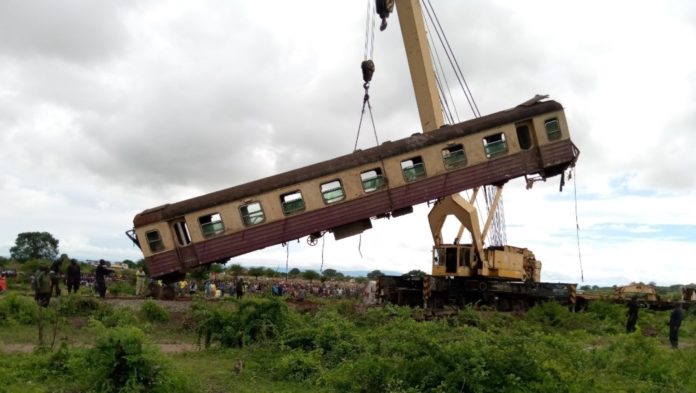Dar es Salaam, Tanzania — The fatal accident of a passenger train which derailed on Sunday, January 3rd near Tanzania’s capital city, Dodoma, killing three people while injuring 66 highlights growing danger and the vulnerability of the railway infrastructure to extreme weather, a local expert has warned.
The accident, which happened at Kigwe village, about 508km from Dar es Salaam, highlights structural weakness of the aging central railway line built in the 1960s.
Climate Change Adaptation
Wilbard Kombe, Professor of Urban Land Management at Ardhi University urged Tanzania authorities to devise measures for climate change mitigation and adaptation to contain natural hazards that frequently destroy railway networks.
According to Kombe sudden torrential rains have the capacity to wash away track beds and make railway crumble.
“We need better strategies to increase the reliability of the rail infrastructure and prove to our neighbors that our train operations get on uninterrupted throughout the rainy season,” Kombe said.
Train transportation, which is heavily relied on by Tanzanians is highly susceptible to flooding triggered by the worsening impacts of climate change.
Recurring Flood Spells
The floods frequently wash away the railway infrastructure forcing trains to derail, and disrupt operations, officials said.
According to Kombe, wet and windy weather can significantly impact the rail network.
“There is the potential for damage to rail tracks caused by debris or fallen trees which could severely impact passenger services,” Kombe said.
Flood water in particular can block the lines with debris, silt, and mud making its way into the track, he stressed.
“The damage that flood water can cause to infrastructure may lead to on-going repairs that can last for weeks even months,” he told Ubuntu Times
New Lease Of Life
While the east African country is determined to give its aging railway network a new lease of life through the construction of the Standard Gauge (SGR) railway along the central corridor, analysts say such efforts are likely to be hampered by the risk of heavy rains hazards.
As part of its broader push to improve the infrastructure for road and railway transportation, Tanzania is implementing multiple projects to tap the potential of a thriving trade with landlocked neighbors.
Landlocked Neighbors
Perched on a lush landscape with vast minerals, agricultural resources, and potential for world class tourism, the east African country plays a pivotal role as a transport hub for its landlocked neighbors including, Rwanda, Burundi, and Zambia, providing unrivaled opportunities for cross-border trade.
As Africa experiences a huge economic recovery with strong growth projections, rail transport is expected to play an important role in the conveyance of freight over long distances. However, the condition of the existing railway networks in Tanzania is poor.
Binilith Mahenge, Dodoma Regional Commissioner, said depending on budgetary allocation the government is determined to build strong rainwater drainage system along major road and railways to withstand the forces of floodwater.
However, critics say railway operators in Tanzania are totally unprepared to deal with the powerful forces of extreme weather which frequently wreak large swathes of rail infrastructure and halt train operations.
Overwhelmed Drainage Systems
Heavy rain can overwhelm the drainage systems on the railway, technically known as culverts and make flooding more likely, experts warned.
“Piles of wet earth, mud, and debris spreading into the track can be a huge problem,” said Kombe.
Climate change is projected to increase the frequency and intensity of extreme weather events thus increasing risks on the railway.
Kombe urged Tanzania authorities to devise a long-term plan to assess flood risks to the railway and identify earth works likely to be flooded thus building a flood-warning database for monitoring the area.
“There are many ways to prepare for and reduce the possibility of flooding, such as deploying flood defense system such as inflatable barriers and clearing branches and leaves from ditches and culverts near the railway,” he said
While local experts had always referred to historical climate data when designing railway transport systems, to help them withstand drainage storms especially extreme weather, Kombe said such data is no longer reliable due to climate change.

